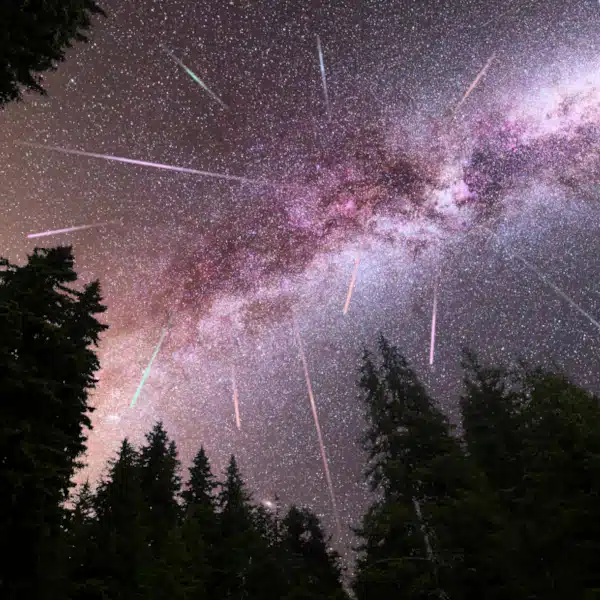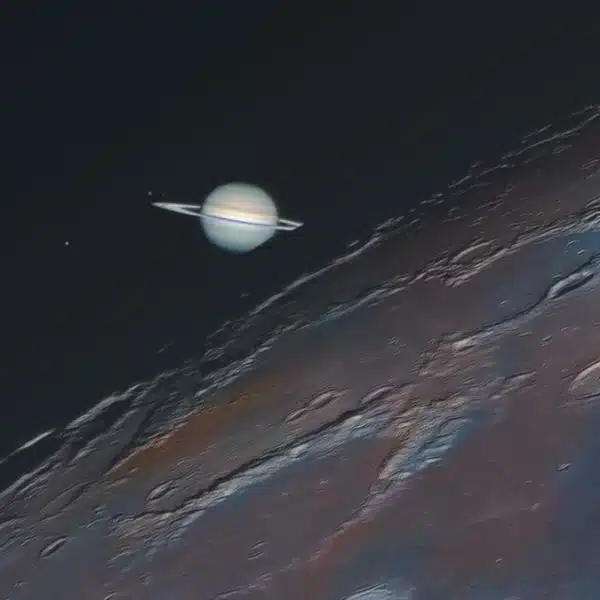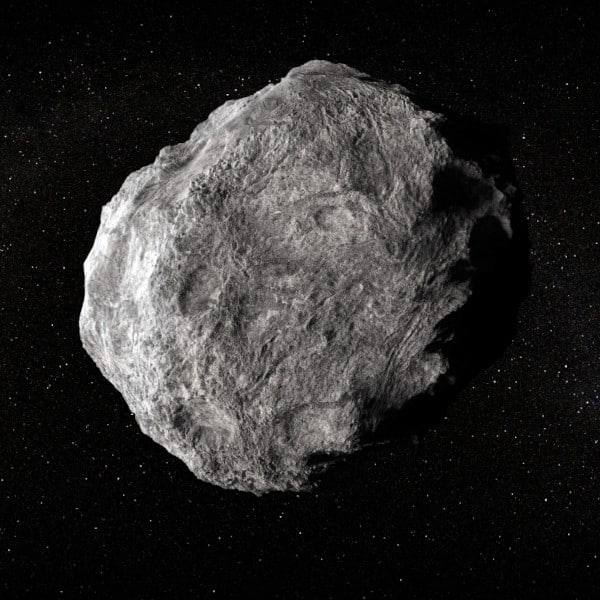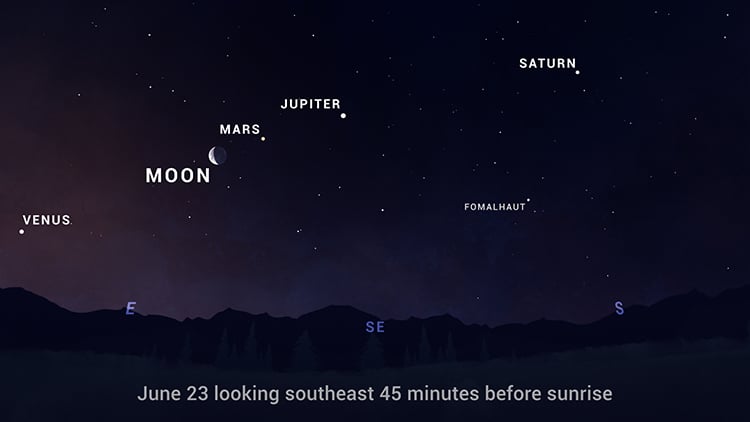
Planets before sunrise in June, with the Moon joining the lineup on the 23rd. (Photo: NASA/JPL-Caltech)
Sometimes the stars align, and other times the planets do. This month, a celestial dance will bring five planets—and eventually the Moon—into a graceful arc across the early pre-dawn sky throughout June. Beginning the weekend of June 3, 2022; Mercury, Venus, Mars, Jupiter, and Saturn will fall into alignment. On June 23, the Moon will join the party to complete the rare celestial event, which will be viewable with the naked eye.
The last time the five planets aligned sequentially was in 2004. They will be visible pre-dawn in a long arc across the horizon. One planet, Mercury, will become brighter as the month progresses. In the early hours of June 23, the crescent moon will join the lineup between Venus and Mars for a very special day. Be sure to catch this sight in the early hours. Conjunctions (close planets) are rather common, but five aligned in their natural order is a special event.
How can you catch this celestial show? First, find a clear view across an eastern horizon. Diana Hannikainen, Sky & Telescope's observing editor, suggested to NPR that interested astronomers arrive 30 minutes before sunrise. Bring binoculars to fully appreciate the splendor. “Don't be disappointed if you don't catch Mercury early on,” she says. “Some people might be able to catch the five planets out early in the month, but not to be too disappointed. Four planets already is a beautiful, beautiful sight.”
Five planets will align across the pre-dawn horizon each morning in June.
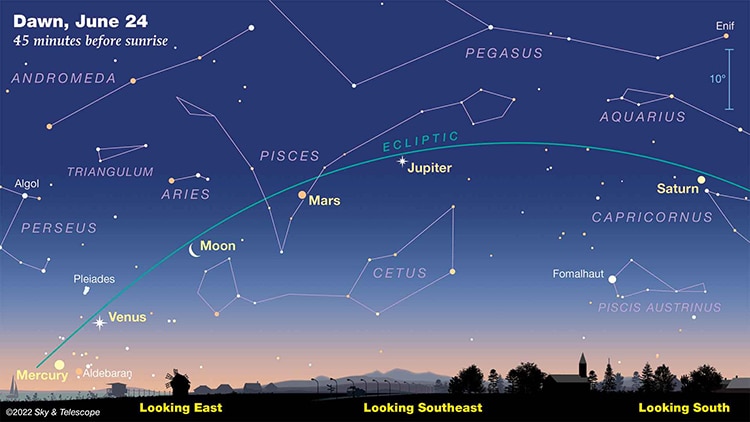
45 minutes before sunrise on June 23, 2022. (Photo: Sky & Telescope illustration)
Catch other amazing celestial events this June.
Related Articles:
15+ of the Most Spectacular Photos From the Worldwide Total Lunar Eclipse
The Milky Way and Andromeda Galaxies Are Set to Collide in 4 Billion Years
NASA Shows Superior Quality of Webb Telescope with Comparison Image
Astrophysics Grad Takes Epic Graduation Photo Under a Total Lunar Eclipse











































































